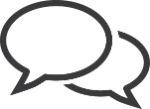
On the surface, this question could seem a little preposterous. From body language and facial expressions to the words we say and write, we’ve all been communicating in some way since the moment we were born. And yet, effective communication can still be exceedingly challenging.
The Holmes Report recently estimated the cost of poor communication to be about $62.4 million per year for organizations of 100,000 employees or more. That breaks down to $26,041 in lost productivity. For smaller companies, the cost can still be considerable. Businesses of 100 employees average a loss of $420,000 each year because of miscommunication.
So, what is it that makes communication so hard? In my experience working with organizations as well as coaching managers and teams, the top five challenges that I’ve seen include:
1. Forgetting about the why.
Sometimes communication falls flat because we focus too much on the “doing” and not the purpose or reason behind what needs to get done. This challenge can lead to resistance or even the feeling that the decision hasn’t been fully thought through.
2. Misusing details by providing too few or too many.
If we focus only on the high-level snapshot, important steps can be overlooked, or the path forward can be misunderstood, leading to lost productivity. Conversely, we also find that too much detail can cause others to feel overwhelmed or uninspired to move forward, which also affects output.
3. Forgetting to consider empathy and tone.
How we communicate is just as important as what we communicate. When we get into timelines, changes and process flows, sometimes the human element of communication gets missed. When this situation occurs, our audience may disengage.
4. Choosing the right medium and format.
Some messages are better delivered in-person; others should be provided in writing. Additionally, format and frequency can impact understanding. By communicating in multiple ways and using different formats – like sending a well-crafted email or speaking to a visual process flow – we can more effectively capture our audience.
5. Getting caught up with time constraints.
Communication often falls flat because the messenger has not put in the time to think through their content and share all relevant information. Similarly, in a world of multi-tasking, the person receiving the information may only be half-focused on the message, which can have unintended consequences.
How can we overcome these communication challenges to maximize productivity?
Many communication issues can be positively impacted by addressing the intent-impact gap. At a high-level, the intent-impact gap occurs when the effect of our message is different from its purpose. Consider this concept in relation to the challenges I listed above.
When we think about point #1 (forgetting the why), all of us want our decisions to seem well thought-out, and if we don’t provide reasoning without our communications, they may not land that way.
Similarly, when considering point #2 (misusing details), no one wants to put together a step-by-step email only to realize that the recipient was de-energized by the task because the detailed process made them feel they could not creatively approach the opportunity.
When we close the intent-impact gap, we strengthen communication and ultimately support productivity. And I recognize this task is easier said than done. It’s something we often address with organizations as they seek to develop effective leaders and managers as well as maximize team performance.
To communicate more effectively and help close communication gaps, try using these four tips:
 1. Set aside time to think through your delivery.
1. Set aside time to think through your delivery.
When you craft a message, whether it’s for a meeting or an email, build time into your day to consider what you want to say. Larger changes may require more time and energy; however, even short communications or notes of thanks deserve attention. When you communicate, work on being present in the moment to devote your attention to the topic at hand. One of the best ways to do that is to slow down and make time to plan your approach.
![]() 2. Consider your audience.
2. Consider your audience.
Is your message going to one individual, a team, a division or the entire company? Reflect on what your audience might need. If you have an individual’s or group’s Emergenetics Profiles, you can get very specific and adjust your talking points and delivery to meet the needs of their preferred Thinking and Behavioral Attributes. If you are speaking to a larger group or don’t have their Profiles, consider what all of the Emergenetics Attributes like to know and make sure to include elements that speak to each preference.
 3. Pick relevant media and formats.
3. Pick relevant media and formats.
Consider what you’re intending to express, how big of an ask it is, how many questions you anticipate getting and if there are multiple ways you could (and should) share the message. Then, assess your options, such as: emails, phone calls, meetings, webinars, company intranets, newsletters, one-on-ones or formal presentations. Also, reflect on the message formatting: does it speak to each Thinking and Behavioral Attribute? As an example, a step-by-step list may appeal to those with a Structural preference, yet Conceptual thinkers will get more energy if you use imagery or colors to call attention to important points.
 4.Get a second opinion.
4.Get a second opinion.
Cognitive diversity is a beautiful thing. It helps us identify blind spots and pick up missing pieces of information that we may not be inclined to see, which can seriously reduce the intent-impact gap. Consider having a colleague review a message before you send it out to get their opinion on what’s missing or how it lands on them. If you ask for help from someone who thinks and behaves differently than you, that’s even better!
Yes, communication can be challenging, despite our years of practice. And, there are steps we can take to be more effective in how we work with others. By considering these four tips as you craft your messages, you can communicate in meaningful ways with colleagues – and help save your company quite a bit of money in the process!
Interested in learning more about developing effective communication in your organization? Fill out the form below to discover how we can help.
 Print This Post
Print This Post
